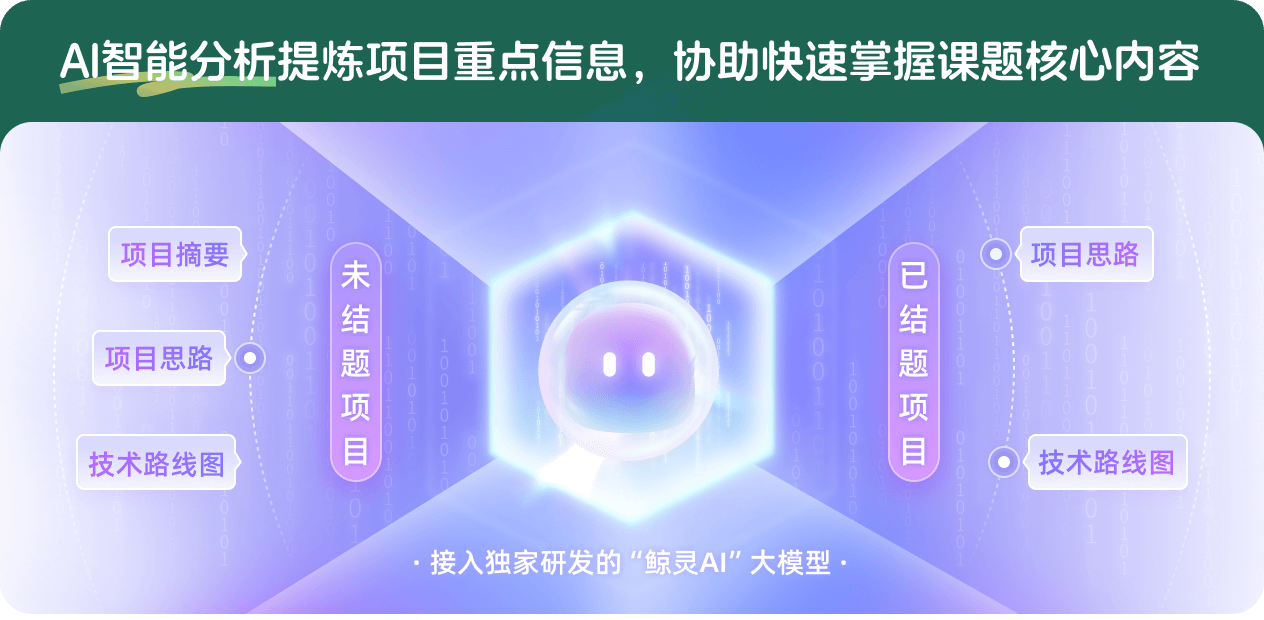产品对消费者的反向塑造:使用酷产品对消费者酷行为的影响及机制分析
项目介绍
AI项目解读
基本信息
- 批准号:71572179
- 项目类别:面上项目
- 资助金额:52.0万
- 负责人:
- 依托单位:
- 学科分类:G0207.市场营销
- 结题年份:2019
- 批准年份:2015
- 项目状态:已结题
- 起止时间:2016-01-01 至2019-12-31
- 项目参与者:Amy N. Dalton; 范晓屏; 章重远; 王颂; 黄鹂强; 李霖; 王唯梁; 朱琳; 杨文;
- 关键词:
项目摘要
Based on consumer unconscious behavior theory and embodiment cognition theory, the present research examines whether using a product can shape consumer behaviors and explores the underlying process and boundary condition of this effect among young consumers in china (after 80s and 90s). Specifically, firstly, we need to conduct focus group interview to know the key words of cool products and cool behaviors. And then, we will collect second hand data from Weibo, Twitter and Facebook to confirm what kinds of products are cool products and what kinds of behaviors represent cool behaviors. More important , we need to know whether using cool products is correlated to cool behaviors. Secondly, using the experiments we tests using cool product makes consumers behave cooler. For example, using product leads to emotional control, slack in the performance, prefer hedonic products, less likely to defer gratification, choose more unhealthy foods and give lower evaluation on expert and authority endorsed advertisements. Then, we explore the underlying process of these effects. We propose that consumers develop beliefs about the kinds of people who use certain products, and these beliefs are incorporated into consumers’ schema for the respective social identity. In order to test this, we show that using cool products participants would response more quickly to cool people and cool brands. Meanwhile, when 1) the product that is strongly linked to another particular social identity schema rather than cool identity and 2) activation of consumers cool awareness the impact of using this cool product on subsequent cool behaviors would be disappeared. In the end, we also attempt to explore the underlying motivation of the cool behaviors. We argues that self-presentational autonomy rather than agentic autonomy is the underlying motivation of the cool behaviors. In other words, when the self-presentational autonomy satiates, the impact of using cool product would not lead to cool behaviors. The present research examines the relationship between consumer and product from a new perspective. It not only riches the unconscious consumer behavior theory, extends cool research, empirically tests the schema theory but also differentiates the impact of self presentational autonomy and agentic autonomy. The findings from the present research would provide important implications for education and brand managers.
本研究从消费者无意识行为和具身理论为出发点,以中国年轻一代(80和90后)为对象实证研究产品对消费者行为的反向塑造,并剖析其内在机制,边界条件。首先,我们通过深度访谈确定酷产品,酷行为的关键字。然后通过在微博,Twitter, Facebook上收集二手数据来确定酷产品和酷行为以及内在的联系。接下来,我们通过实验研究来验证酷产品的使用对酷行为的具体影响。我们区分了到底是酷产品的展露还是酷产品的使用会影响酷行为。然后,我们深入挖掘使用酷产品对酷行为的影响的内在机制,即使用酷产品激活了酷的图式,从而导致消费者在行为上表现出酷的行为。同时,我们将验证如果屏蔽产品的酷,或者激活消费者对酷的自我的意识,这种影响效应将会消失。最后,我们剖析了酷行为的动机本质。本研究是用新的视角来研究消费和产品的关系,丰富了消费者无意识行为理论,扩展了酷的研究,实证了图式理论,同时对企业产品和品牌定位具有现实的意义。
结项摘要
现有的消费者行为研究多关注于消费者通过购买产品实现不同的动机,然后消费者和产品是否只是存在这样的单项关系?本研究认为产品会对消费者有反向塑造作用。 本研究围绕着四个问题去探讨这个问题:.研究问题一:酷产品和酷行为的识别 。通过二手数据,词频分析等我们选择高词频的酷产品和酷行为。.研究问题二:酷产品是否让消费者表现出更加酷的行为。通过三个不同的研究我们验证了使用酷产品会让消费者变得宠辱不惊,更加懈怠,在业绩表现上表现的更差和更多的选择非健康的产品。 .研究问题三:使用酷产品对酷行为影响的内在机制。通过四个研究证明,酷产品的使用激活了消费者的酷的图式,从而导致消费者更多的关注酷的产品和酷的任务。同时,使用酷产品会在无意识状态下,该表消费者自我酷的认知,因此导致他们出现了酷的行为。而这种行为只有在较低的消费者自我认知下才会出现。更重要的是,我们研究发现,一旦酷产品内涵的酷的图式被打断,也就是说我们建立酷产品和其他认知的联系,即使使用酷产品也不会出现酷的行为。.研究问题四:酷行为的内在动机挖掘。 我们进行了实验发现现有的实验数据并不能提供直接的证据表明酷行为的内在动机是自我展示和表现动机。但是,通过调节变量检验,我们发现只有当消费者具有较高的自我展示动机时,是否使用酷产品会影响是否消费者出现酷的行为。这从侧面说明了可能消费者使用酷产品导致酷行为可能是自我表现动机驱动的。. 围绕着产品使用对消费者的反向塑造,申请人进行了一些扩展研究发现产品元素(产品设计中含有国旗要素),产品标签(能效标签以及社会规范性陈述),产品体验带来的情绪(敬畏感),产品展现方式(拟人化),产品的智能化(智能手机)以及品牌联盟和服务交互都会重塑消费者。甚至消费者所在的家庭环境也对消费者行为有着养成效应。综合这些方面,我们系统的回答了产品使用通过哪些方面对消费者行为进行重塑的?以及重塑了消费者的哪些行为?
项目成果
期刊论文数量(10)
专著数量(0)
科研奖励数量(4)
会议论文数量(0)
专利数量(0)
打破节能家电中能效标签在中国的窘境-标注社会规范信息有效性探究
- DOI:--
- 发表时间:2017
- 期刊:上海管理科学
- 影响因子:--
- 作者:余之宁;王丽丽;周丹萍
- 通讯作者:周丹萍
Restrained by resources: The impact of scarcity cues and childhood socioeconomic status (SES) on consumer preference for feasibility
受资源限制:稀缺线索和儿童社会经济地位(SES)对消费者可行性偏好的影响
- DOI:--
- 发表时间:--
- 期刊:International Journal of Research in Marketing
- 影响因子:7
- 作者:Lili Wang;Yanfen You;Chun-Ming Yang
- 通讯作者:Chun-Ming Yang
Flag backlash: Why does the presence of the American flag reduce product evaluation?
国旗反弹:为什么美国国旗的存在会降低产品评价?
- DOI:10.1002/mar.21016
- 发表时间:2017-07
- 期刊:Psychology and Marketing
- 影响因子:6.7
- 作者:LILI WANG;Peng Zuo
- 通讯作者:Peng Zuo
Are exemption for strong brands: the influence of brand community rejection on brand evaluation
强势品牌是否可以豁免:品牌社区排斥对品牌评价的影响
- DOI:--
- 发表时间:2017
- 期刊:European Journal of Marketing
- 影响因子:4.4
- 作者:LILI WANG;Ying Ding
- 通讯作者:Ying Ding
Unlocking the influence of family business exposure on entrepreneurial intentions
揭示家族企业暴露对创业意图的影响
- DOI:10.1007/s11365-017-0475-2
- 发表时间:2018-12-01
- 期刊:INTERNATIONAL ENTREPRENEURSHIP AND MANAGEMENT JOURNAL
- 影响因子:5.6
- 作者:Wang, Dan;Wang, Lili;Chen, Ling
- 通讯作者:Chen, Ling
数据更新时间:{{ journalArticles.updateTime }}
{{
item.title }}
{{ item.translation_title }}
- DOI:{{ item.doi || "--"}}
- 发表时间:{{ item.publish_year || "--" }}
- 期刊:{{ item.journal_name }}
- 影响因子:{{ item.factor || "--"}}
- 作者:{{ item.authors }}
- 通讯作者:{{ item.author }}
数据更新时间:{{ journalArticles.updateTime }}
{{ item.title }}
- 作者:{{ item.authors }}
数据更新时间:{{ monograph.updateTime }}
{{ item.title }}
- 作者:{{ item.authors }}
数据更新时间:{{ sciAawards.updateTime }}
{{ item.title }}
- 作者:{{ item.authors }}
数据更新时间:{{ conferencePapers.updateTime }}
{{ item.title }}
- 作者:{{ item.authors }}
数据更新时间:{{ patent.updateTime }}
其他文献
数据约束模型的相似最优校准一致性分析
- DOI:10.3778/j.issn.1002-8331.1709-0037
- 发表时间:2019
- 期刊:计算机工程与应用
- 影响因子:--
- 作者:谢苗苗;方贤文;王丽丽
- 通讯作者:王丽丽
CDK12与肿瘤相关性的研究进展
- DOI:10.3781/j.issn.1000-7431.2018.55.007
- 发表时间:2018
- 期刊:肿瘤
- 影响因子:--
- 作者:汪浩;王丽丽;李鑫;侯定坤;徐子寒;董世强;王海涛
- 通讯作者:王海涛
细胞不同铺展程度的张拉整体模型的计算分析
- DOI:10.16355/j.cnki.issn1007-9432tyut.2019.03.019
- 发表时间:2019
- 期刊:太原理工大学学报
- 影响因子:--
- 作者:王丽丽;陈维毅
- 通讯作者:陈维毅
siRNA干扰MACC1表达对前列腺癌细胞株PC-3生长与侵袭影响研究
- DOI:10.16073/j.cnki.cjcpt.2015.23.004
- 发表时间:2015
- 期刊:中华肿瘤防治杂志
- 影响因子:--
- 作者:韦士勤;李常颖;李保国;李建民;孟斌;王丽丽;王海涛
- 通讯作者:王海涛
Inflating transform matrices to mitigate assimilation errors with robust filtering based ensemble Kalman filters
使用基于鲁棒滤波的集成卡尔曼滤波器膨胀变换矩阵以减轻同化误差
- DOI:10.1002/asl.681
- 发表时间:2016-08
- 期刊:Atmospheric Science Letters
- 影响因子:3
- 作者:摆玉龙;张转花;张彦丽;王丽丽
- 通讯作者:王丽丽
其他文献
{{
item.title }}
{{ item.translation_title }}
- DOI:{{ item.doi || "--" }}
- 发表时间:{{ item.publish_year || "--"}}
- 期刊:{{ item.journal_name }}
- 影响因子:{{ item.factor || "--" }}
- 作者:{{ item.authors }}
- 通讯作者:{{ item.author }}

内容获取失败,请点击重试

查看分析示例
此项目为已结题,我已根据课题信息分析并撰写以下内容,帮您拓宽课题思路:
AI项目摘要
AI项目思路
AI技术路线图

请为本次AI项目解读的内容对您的实用性打分
非常不实用
非常实用
1
2
3
4
5
6
7
8
9
10
您认为此功能如何分析更能满足您的需求,请填写您的反馈:
王丽丽的其他基金
拟人化策略与消费者健康行为研究:保护动机理论视角探析
- 批准号:71972169
- 批准年份:2019
- 资助金额:48 万元
- 项目类别:面上项目
社会支持对消费者自我控制行为的影响研究
- 批准号:71202158
- 批准年份:2012
- 资助金额:22.0 万元
- 项目类别:青年科学基金项目
相似国自然基金
{{ item.name }}
- 批准号:{{ item.ratify_no }}
- 批准年份:{{ item.approval_year }}
- 资助金额:{{ item.support_num }}
- 项目类别:{{ item.project_type }}
相似海外基金
{{
item.name }}
{{ item.translate_name }}
- 批准号:{{ item.ratify_no }}
- 财政年份:{{ item.approval_year }}
- 资助金额:{{ item.support_num }}
- 项目类别:{{ item.project_type }}




















